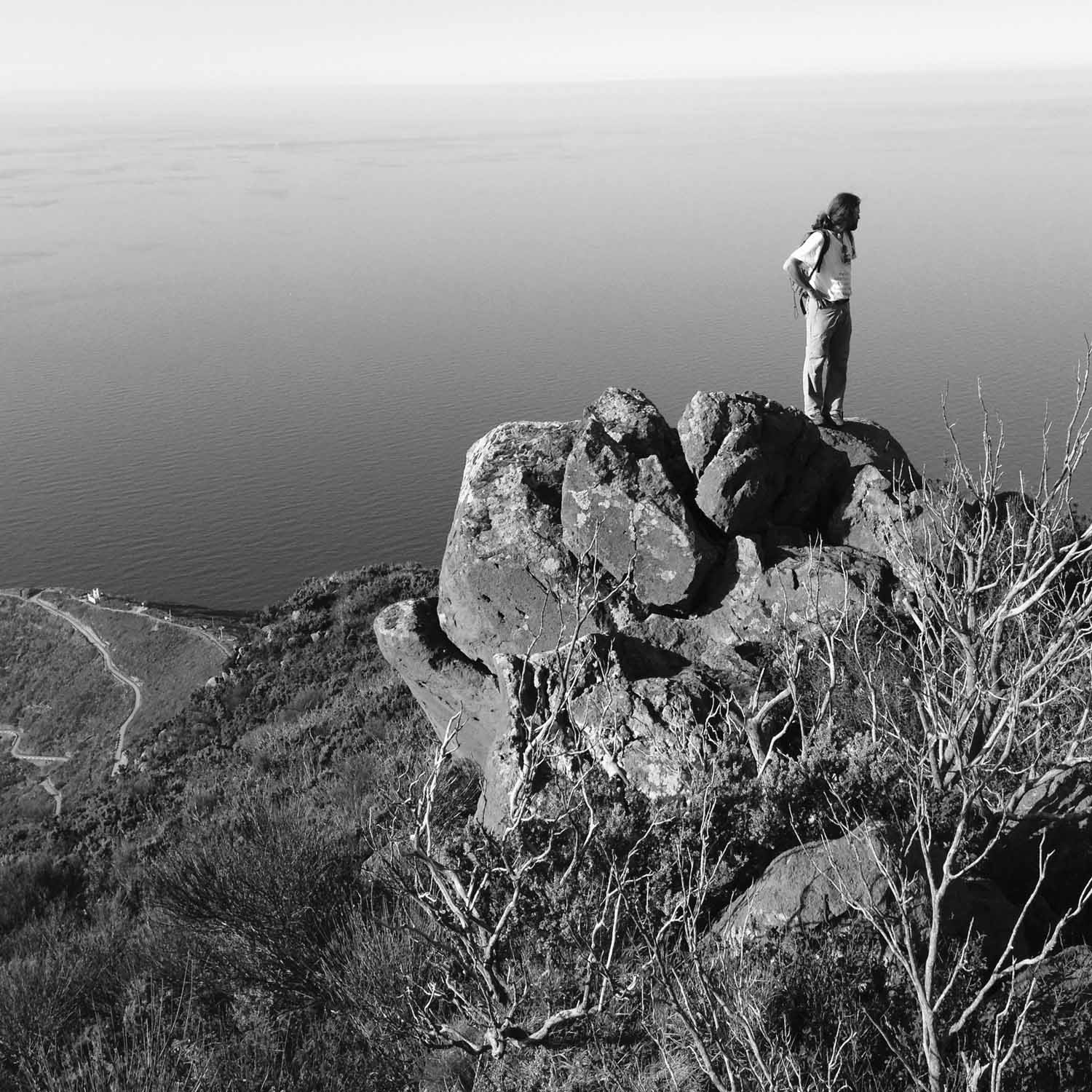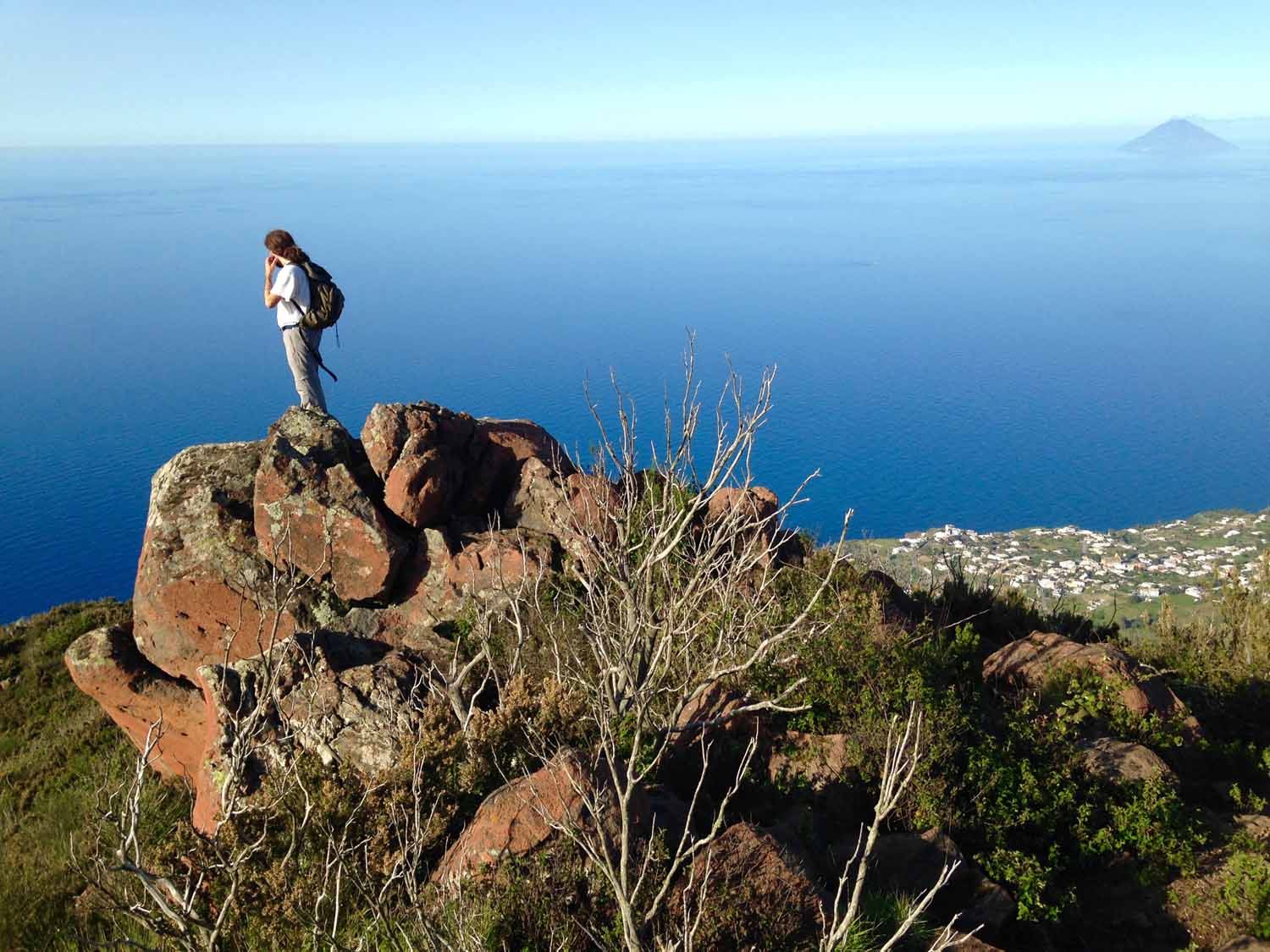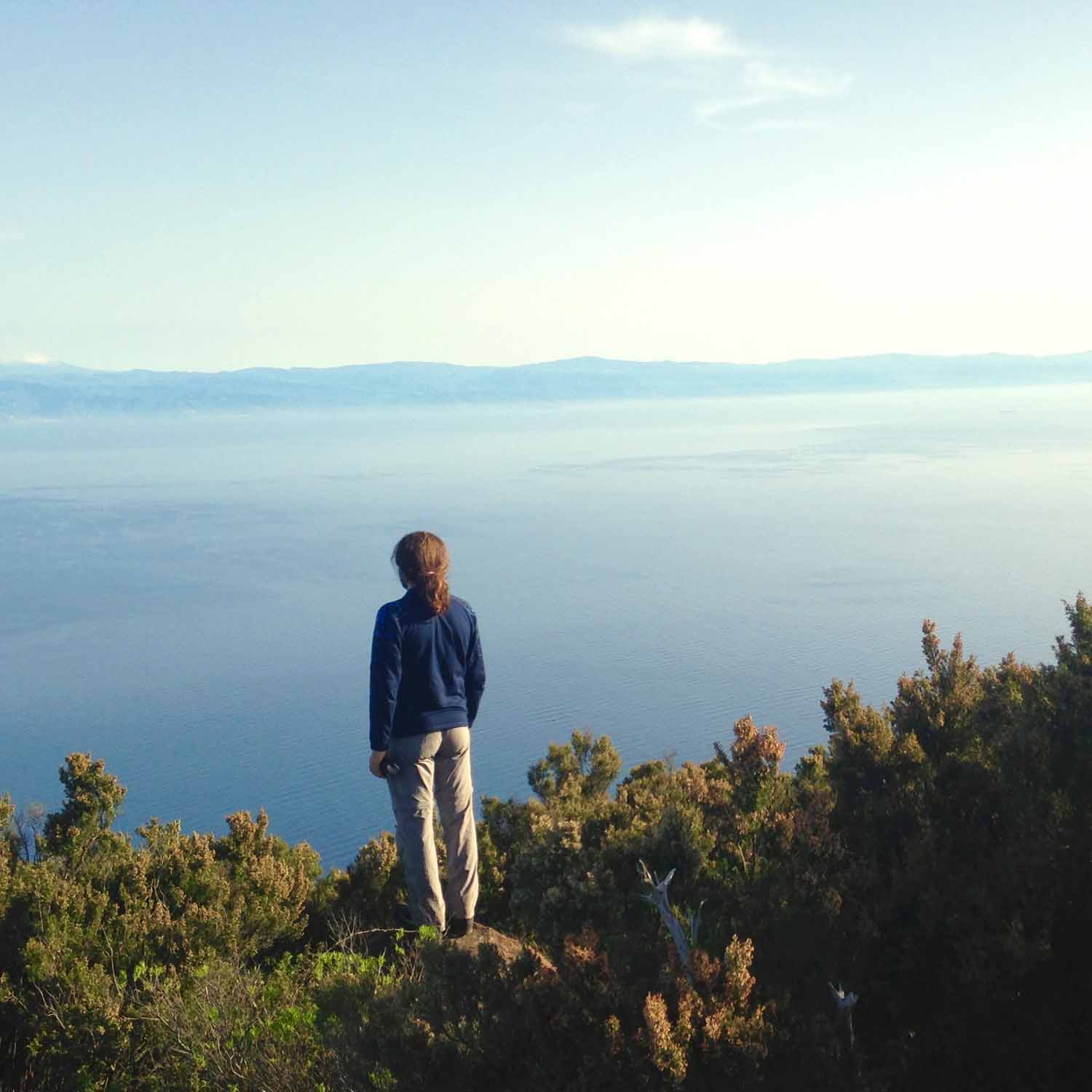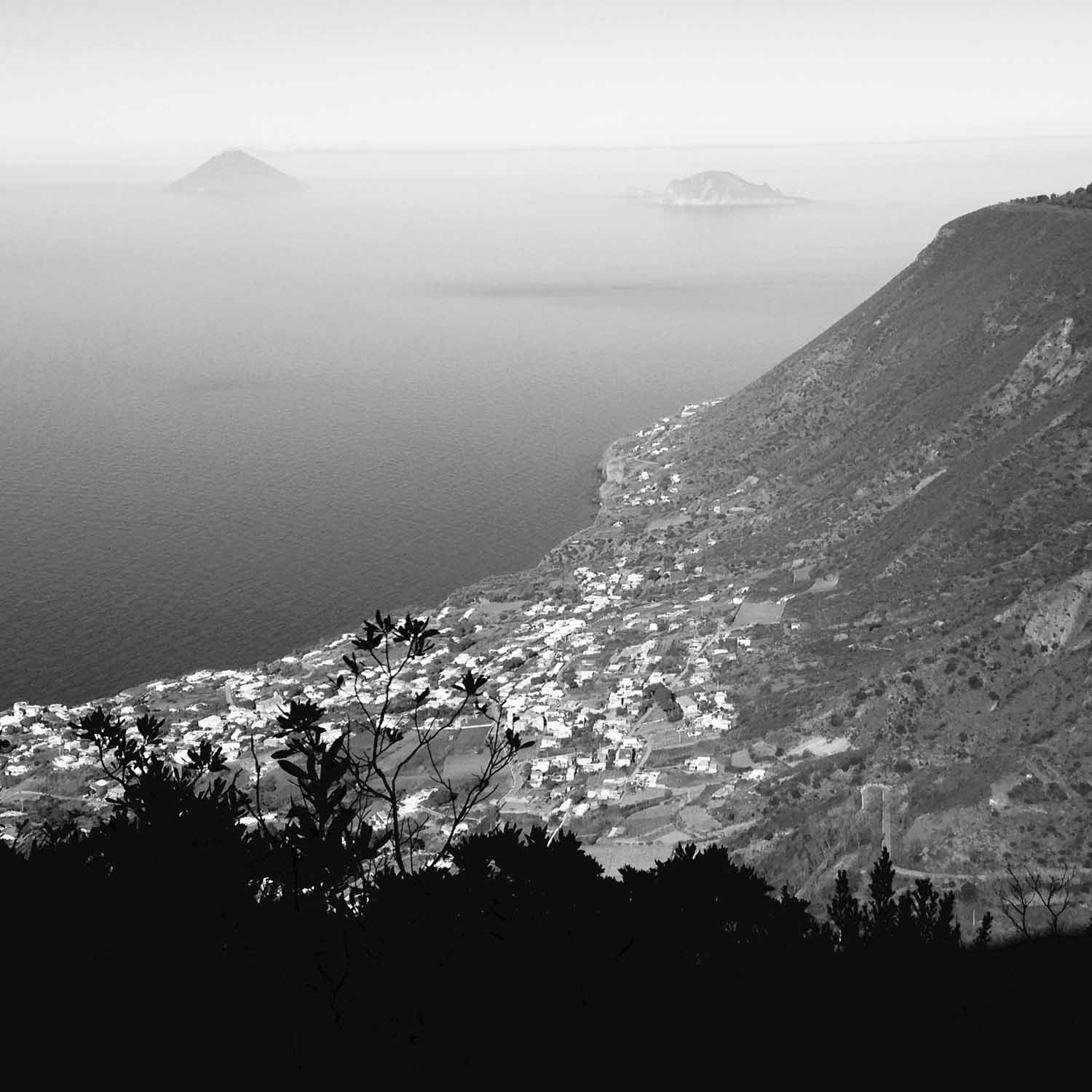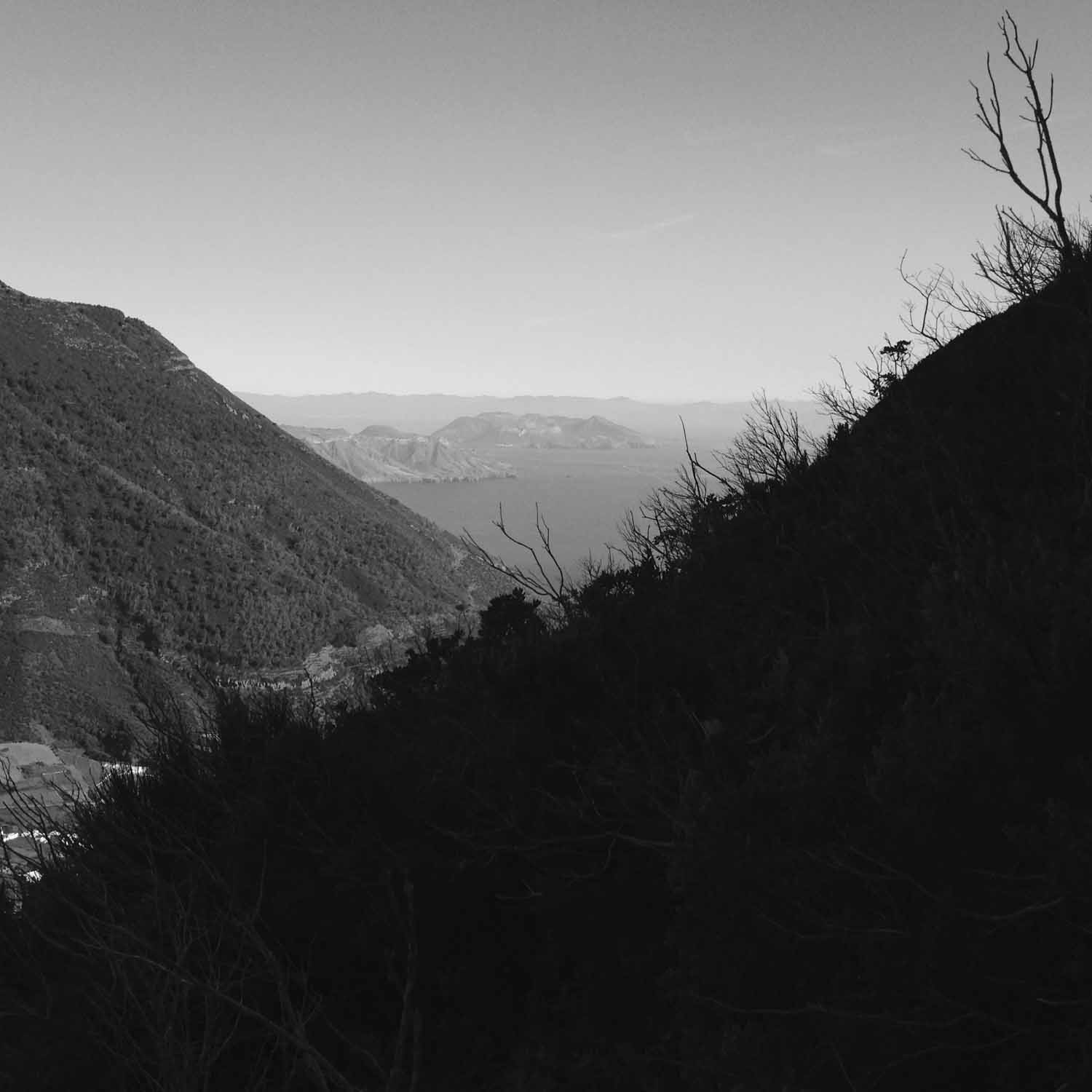A volcano a day keeps Aeolus at bay
[Day 3]
by Rudston Steward

It’s a formula that I adhere to any time the opportunity presents itself. As it happens, today and tomorrow—the second and third days of my Salina hike—afford an opportunity to double the dose: two twin-peaked volcanos on two successive days. Today (picking up where I left off yesterday) from Pollara to the top of Monte dei Porri and down the other side to Malfa on the coast; tomorrow from Malfa to the summit of Monte Fossa delle Felci and back down the other side to Santa Marina. Both rounded off with swims at Punta Scario (today) and Lingua (tomorrow).
I am feeling quite philosophical about the prospect.
The trail from Pollara ascends Monte dei Porri’s northern slope. It’s a path walked much less frequently than those that head up Monte Fossa delle Felci, because the latter is the slightly higher peak, so everyone opts to climb it instead. They’re after the bragging rights earned by making it to the highest point in the Aeolian Islands. But the summit of Monte dei Porri is, in fact, more spectacular than its eminent twin’s. The vegetation is lower, visibility is far superior. On top of Porri, if the weather holds, you get a mind-glowingly spectacular 360 degree panoramic. And the feel of the place, once you settle in up there, is somehow more contemplative and more illuminating than the partially-obscured summit at Fossa delle Felci.
AT FIRST ONLY ALICUDI AND FILICUDI ARE VISIBLE, GNOSTIC GUARDIANS OF THE DISTANT WESTERN FRONT. THEY SLIDE SLOWLY OUT OF SIGHT, STEP BY STEP, AS I ARABESQUE UP AND AROUND PORRI’S CONE.
Today’s hike unfolds like a dance. As I gain height from the sea level start at Pollara, the six islands that lie scattered in couplets around Salina appear and disappear in rhythmic sequence. A seductive game of hide and seek. At first only Filicudi and Alicudi are visible, gnostic guardians of the distant western front. They slide slowly out of sight, step by step, as I arabesque up and around Porri’s cone. Stromboli’s squat isosceles and the flattened fishy form of Panarea float into view on the ethereal north-eastern horizon. But they too soon exit stage left. Onwards and upwards I go, until, quite abruptly, gravitas-green Lipari and the amber lump of Vulcano rear into foreshortened view. Beyond, further south, the outline of the Sicilian mainland is a pallid filigree.
Just before I reach the summit, in a small dip crowded over with strawberry trees, visibility drops and the islands evaporate. I press on through the foliage, a final upsurge, to emerge onto the apex. The wayward beauty of the Aeolian design is revealed: six archipelagoed sisters arranged around central Salina like sentinels. A rough three-pointed star cast into the rippled sheen of the Tyrrhenian Sea.
This is why I walk up mountains: to remind myself of my place in the world.

